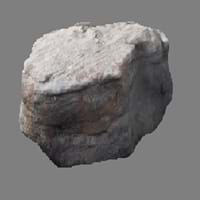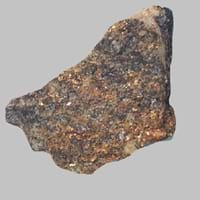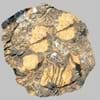Definition
Gritstone or grit is a hard, coarse-grained, siliceous sandstone
Adakite is an intermediate to felsic volcanic rock that has geochemical characteristics of magma which is said to be formed by partial melting of altered basalt that is subducted below volcanic arcs
Origin
Pennines, England
Adak, Aleutian Islands
Discoverer
J.J. Ferber
Defant and Drummond
Etymology
From Grit + Stone
From Adak, Aleutian Islands
Class
Sedimentary Rocks
Igneous Rocks
Sub-Class
Durable Rock, Hard Rock
Durable Rock, Medium Hardness Rock
Group
Not Applicable
Volcanic
Other Categories
Coarse Grained Rock, Opaque Rock
Fine Grained Rock, Medium Grained Rock, Opaque Rock
Texture
Earthy
Porphyritic
Color
Beige, Black, Brown, Colourless, Cream, Dark Brown, Green, Grey, Light Green, Light to Dark Grey, Pink, Red, White, Yellow
Black, Brown, Light to Dark Grey
Durability
Durable
Durable
Appearance
Layered and Foliated
Dull and Soft
Interior Uses
Countertops, Decorative Aggregates, Homes, Interior Decoration
Decorative Aggregates, Floor Tiles, Homes, Hotels, Kitchens
Exterior Uses
As Building Stone, Garden Decoration, Office Buildings, Paving Stone
As Building Stone, As Facing Stone, Office Buildings
Other Architectural Uses
Curbing
Whetstones
Construction Industry
Construction Aggregate, Roadstone
As Dimension Stone, Cobblestones, Rail Track Ballast, Roadstone
Medical Industry
Not Yet Used
Not Yet Used
Antiquity Uses
Artifacts, Monuments, Sculpture
Monuments, Sculpture, Small Figurines
Commercial Uses
An Oil and Gas Reservoir, As a Feed Additive for Livestock, Gemstone, Metallurgical Flux, Production of Lime, Soil Conditioner, Source of Magnesia (MgO), Tombstones
Commemorative Tablets, Pottery, Used in aquariums
Types
Not Available
Not Available
Features
Available in Lots of Colors and Patterns, Generally rough to touch, Very fine grained rock
Has High structural resistance against erosion and climate, Host rock for Diamond, Very fine grained rock
Archaeological Significance
Famous Monuments
Data Not Available
Data Not Available
Famous Sculptures
Data Not Available
Data Not Available
Pictographs
Not Used
Used
Petroglyphs
Not Used
Used
Formation
Gritstone is a type of sedimentary rock which was formed on the floors of wide river deltas where the grit deposits were laid down, with every tide or flood dumping another layer of sediment.
Adakite rocks are formed when the hydrous fluids are released from minerals that break down in metamorphosed basalt, and rise into the mantle they initiate partial melting.
Mineral Content
Calcite, Clay Minerals, Feldspar, Micas, Quartz
Olivine, Plagioclase, Pyroxene
Compound Content
Aluminium Oxide, CaO, Iron(III) Oxide, Potassium Oxide, MgO, Sodium Oxide, Silicon Dioxide
Aluminium Oxide, MgO, Silicon Dioxide
Types of Metamorphism
Not Applicable
Cataclastic Metamorphism, Contact Metamorphism, Impact Metamorphism, Regional Metamorphism
Types of Weathering
Biological Weathering, Chemical Weathering, Mechanical Weathering
Chemical Weathering, Mechanical Weathering
Types of Erosion
Chemical Erosion, Coastal Erosion
Coastal Erosion, Sea Erosion, Water Erosion
Grain Size
Coarse Grained
Fine to Medium Grained
Fracture
Conchoidal
Conchoidal
Streak
White
Bluish Black
Porosity
Highly Porous
Less Porous
Luster
Dull
Grainy, Pearly and Vitreous
Compressive Strength
Not Available
Cleavage
Perfect
Not Available
Toughness
Not Available
Not Available
Specific Gravity
2.250
Not Available
Transparency
Opaque
Opaque
Density
2.2 g/cm3
Not Available
Specific Heat Capacity
Not Available
Resistance
Heat Resistant, Impact Resistant, Pressure Resistant
Heat Resistant, Pressure Resistant, Wear Resistant
Deposits in Eastern Continents
Asia
China, India, Kazakhstan, Mongolia, Russia, Uzbekistan
India, Russia
Africa
Namibia, Nigeria, South Africa
Ethiopia, Somalia, South Africa
Europe
Austria, Denmark, Germany, Great Britain, Netherlands, Poland, Sweden, Switzerland, United Kingdom
Iceland
Others
Greenland
Not Yet Found
Deposits in Western Continents
North America
Canada, USA
Canada, USA
South America
Brazil
Brazil
Deposits in Oceania Continent
Australia
New South Wales, New Zealand, Western Australia
Not Yet Found
All about Gritstone and Adakite Properties
Know all about Gritstone and Adakite properties here. All properties of rocks are important as they define the type of rock and its application. Gritstone belongs to Sedimentary Rocks while Adakite belongs to Igneous Rocks.Texture of Gritstone is Earthy whereas that of Adakite is Porphyritic. Gritstone appears Layered and Foliated and Adakite appears Dull and Soft. The luster of Gritstone is dull while that of Adakite is grainy, pearly and vitreous. Gritstone and Adakite are available in beige, black, brown, colourless, cream, dark brown, green, grey, light green, light to dark grey, pink, red, white, yellow colors. The commercial uses of Gritstone are an oil and gas reservoir, as a feed additive for livestock, gemstone, metallurgical flux, production of lime, soil conditioner, source of magnesia (mgo), tombstones and that of Adakite are commemorative tablets, pottery, used in aquariums.










